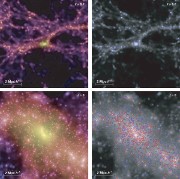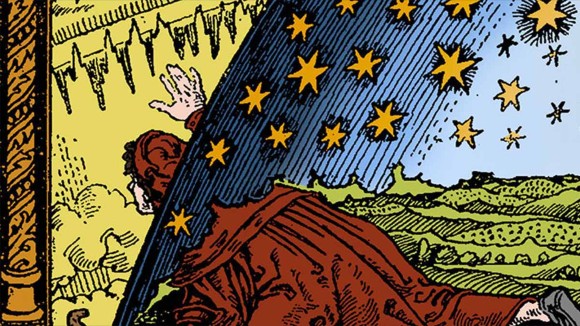Many Nature articles have helped to redefine our knowledge of the Universe. None of these have had bigger implications than those which have sought to explain how the entire Universe is put together. George Blumenthal, Sandra Faber, Joel Primack and Martin Rees presented a succinct summary of the understanding that was prevalent in the early 1980s of the structure of the Universe (Blumenthal et al. 1984). The sizes and shapes of galaxies and their propensity to cluster hierarchically were all put in the context of cold dark matter, the best model available at the time. The huge voids between the galaxy clusters and superclusters that make up the filamentary components of the Universe were discussed in depth by Yakov Zel’dovich and colleagues (Zeldovich et al. 1982).
The structure that we see in the present-day Universe is a result of tiny fluctuations in conditions in the instants after the Big Bang. These inhomogeneities are visible today as small temperature anisotropies in the Cosmic Microwave Background (CMB), the faint imprint of the Big Bang after cosmic inflation. Nature presented the first images of resolved structure in the CMB in an article by Paolo de Bernardis and collaborators (de Bernardis et al. 2000). These observational results, from a balloon-borne experiment called Boomerang, were a strong confirmation of the cold dark matter-based cosmological models. In the framework of these models, the CMB was also expected to be polarised, a property that could be verified observationally. John Kovac and colleagues from the University of Chicago took up the challenge with an interferometer called DASI (Kovac et al. 2002), finding a level of polarisation in excellent agreement with the theory.
 As a test of cold dark matter and inflation theories, Volker Springel and collaborators constructed two significant simulations of the Universe, the results of which found a place in Nature. The first, the ‘Millenium Simulation’ (Springel et al. 2005) used 10 billion particles inside a cube of 2.23 billion ly per side. They found that baryon-induced features in the initial conditions would be visible today, in the distribution of low-redshift galaxies, although in a distorted form. The simulation was so rich in resolution that they could examine the clustering of galaxies as a function of redshift and galaxy properties, they could follow the fate of the first quasars in the Universe, and visualise the cosmic web of cold dark matter filaments. The report of the second simulation, ‘Illustris’ was led by Mark Vogelsberger (Vogelsberger et al. 2014). It detailed a smaller simulation with more resolution elements that focused on the creation of a mixed population of elliptical and spiral galaxies, as well as reproducing the observed large-scale distribution of galaxies in clusters and metallicities of individual galaxies.
As a test of cold dark matter and inflation theories, Volker Springel and collaborators constructed two significant simulations of the Universe, the results of which found a place in Nature. The first, the ‘Millenium Simulation’ (Springel et al. 2005) used 10 billion particles inside a cube of 2.23 billion ly per side. They found that baryon-induced features in the initial conditions would be visible today, in the distribution of low-redshift galaxies, although in a distorted form. The simulation was so rich in resolution that they could examine the clustering of galaxies as a function of redshift and galaxy properties, they could follow the fate of the first quasars in the Universe, and visualise the cosmic web of cold dark matter filaments. The report of the second simulation, ‘Illustris’ was led by Mark Vogelsberger (Vogelsberger et al. 2014). It detailed a smaller simulation with more resolution elements that focused on the creation of a mixed population of elliptical and spiral galaxies, as well as reproducing the observed large-scale distribution of galaxies in clusters and metallicities of individual galaxies.

